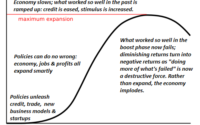Wedged in the emails between a pornographic invitation and a special sale offering from a credit card already canceled there it was—an Earth Day greeting from a trade organization (lobbying group, really) that has worked mightily for decades to discredit and delay any efforts to slow down or prevent climate change. Wow! Greenwash or revelation? We think that the numbers are more likely to tell the story accurately, rather than the well crafted public relations line which touts a net zero goal for 2050, when it might be too late to matter. And when the present generation of management will be retired to the golf course or pushing up daisies. This makes today’s pronouncements of little value because hardly anyone will act on them in the foreseeable future. We have looked at that question in regard to the electricity market, and we previously concluded that the US utility industry was way behind where it needed to be in terms of capital spending for an increasingly electrified economy. They could finance more capital spending and the price of electricity, in real terms, would go up with or without decarbonization. Why? Because the US utility industry’s plant is relatively old (and out of place) and it has to be replaced regardless of our views on decarbonization or prospective fossil fuel mix in the power generation fleet. Since we did our last analysis, fuel costs, interest rates and construction costs have all risen. Also the US government issued new estimates of the cost of new power generation and the odds seem better that electric cars will continue to gain significant market share.
Related: The High Costs Of Electrifying The U.S. Auto Industry
Here are the key points of our new analysis:

We calculate, then, that the real price of electricity will rise 2.4% annually with no change in generating mix and 4.1% annually with a shift to a decarbonized generating mix. In other words, a low single-digit rate of increase. (Don’t take decimal points seriously in any 20-year projection.) Paying for electricity in 2021 was equal to 1.8% of the gross domestic product. It may make less difference whether the price goes up 2% or 4% than whether the electricity is there when people need it.
Now for the disturbing number. We figure that the industry will have to spend $11.5 trillion over 20 years to replace old plant (generation, distribution, and transmission) to meet growth demand and to decarbonize. Or the utility industry can spend $8.4 trillion to expand and modernize with its current mostly fossil fuel mix. We say “replace” deliberately. Most electric utility plant or assets are almost 30-40 years old, which is close to its accounting retirement age. Some assets are far older. Some of these really aged assets (poles and wires) fall down in storms and or burn up in forest fires. Two decades from now, unreplaced plants will be beyond gerontological. In simple arithmetic that means the utility industry needs to spend somewhere between $420 and $575 billion per year. Annual capital spending in the electricity industry, right now, probably is closer to $200 billion. So, getting beyond the greenwashing, we see an industry way behind in necessary capital spending. This is bad news for speedy electrification of the economy which depends on a robust utility industry that can meet the increasing demand for electricity.
Here’s the bottom line. The real price of electricity will rise but probably not at an excessive rate. And these expected price increases should have only a modest economic impact. Electricity bills account for a surprisingly small percentage of a typical household’s budget. The real question is when and whether electricity suppliers commit the capital funds at scale to make economy-wide electrification possible.
By Leonard Hyman and William Tilles for Oilprice.com
More Top Reads From Oilprice.com:



